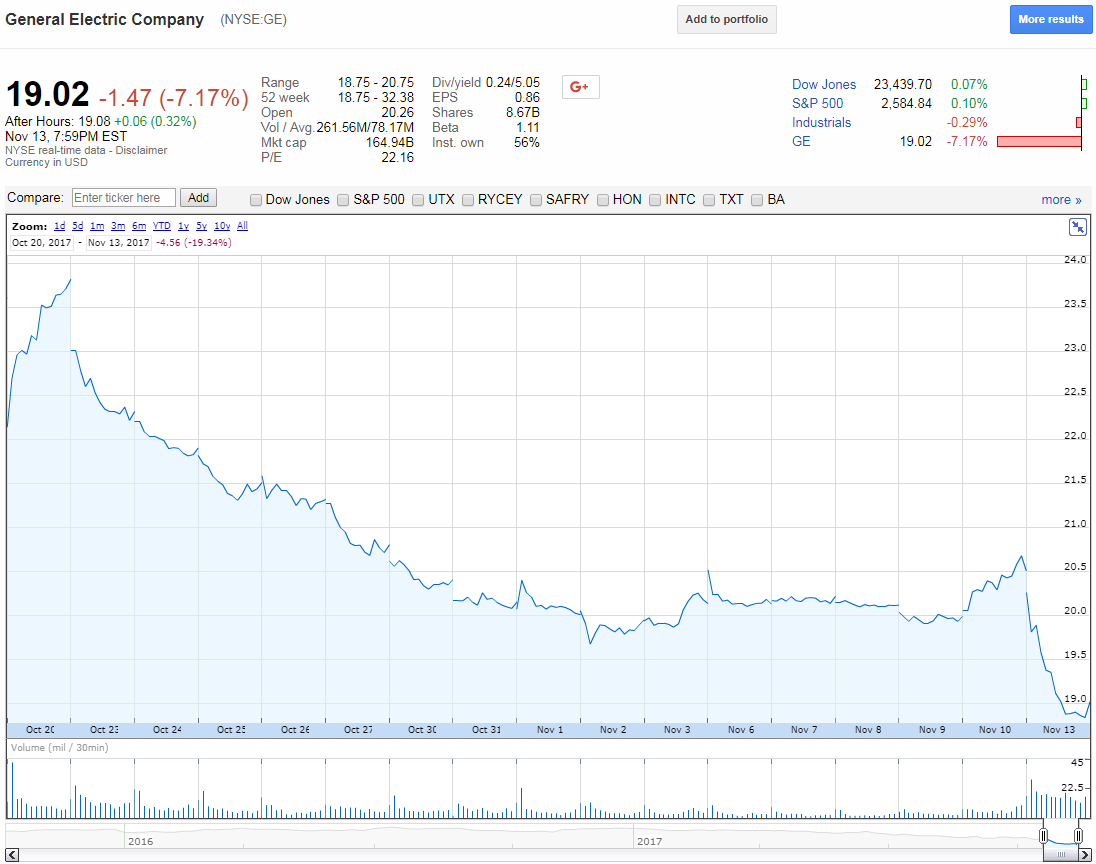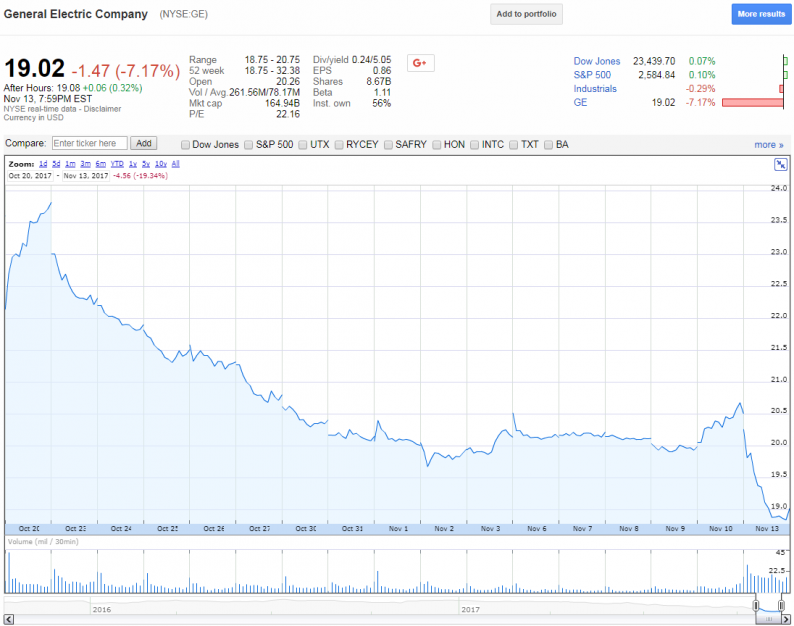On Monday, November 13, before the opening bell, General Electric (NYSE: GE) finally faced up to the reality that it wasn’t going to escape having to cut its dividend for the second time since the Great Depression. That made the company’s stock price action for the day very different from what the company experienced just a few weeks ago, on Friday, October 20, when investors thought they were going to see a dividend cut, but were surprised when the company didn’t follow through at that time.

This is a cool chart because it reveals not just how investors reacted to the news of no dividend cut on 20 October 2017 and also to the news of GE’s 50% dividend cut on November 13, but also how investors anticipated the move during the days in between, as GE’s stock price declined by 12.17% before dropping by another 7.17% on the day of the dividend cut announcement. GE’s stock price fell by 19.34% during just those 16 trading days.
That final decline came after a 25.11% decline in GE’s stock price in the preceding 10 months since 23 December 2017. GE’s total decline since that date now exceeds 40%, which puts the company’s stock price decline on par with its just announced 50% dividend cut from $0.24 per share to $0.12 per share.
Meanwhile, all that occurred as the S&P 500 has risen by 14.33%.
For GE, the slashing of its dividend comes with the news that the company itself will become much smaller. And yet, analysts don’t believe that the restructuring that GE’s CEO John Flannery also announced on 13 November 2017 goes far enough.
GE kicked off the morning by announcing a 50 percent cut to its quarterly dividend, a major, if necessary, step for a company that prides itself on the payout and caters to a large number of individual investors. Looking at GE’s projected 2018 numbers released just a few hours later, however, it’s not clear the company cut deep enough.
The reduced dividend still costs about $4 billion annually. And while GE’s targeting $6 billion to $7 billion in industrial free cash flow next year, that’s based on a “cherry-picked definition”, says Cowen & Co.’s Gautam Khanna. The real number appears to be close to zero if you account for pension and capital expenditures as other industrial companies would, he says.














Leave A Comment